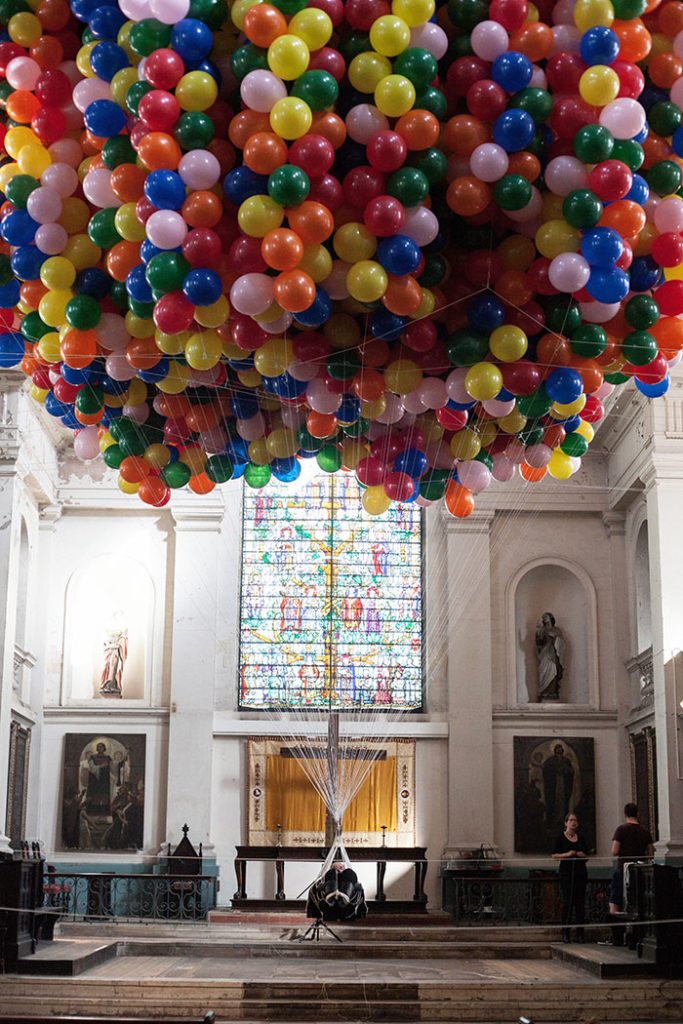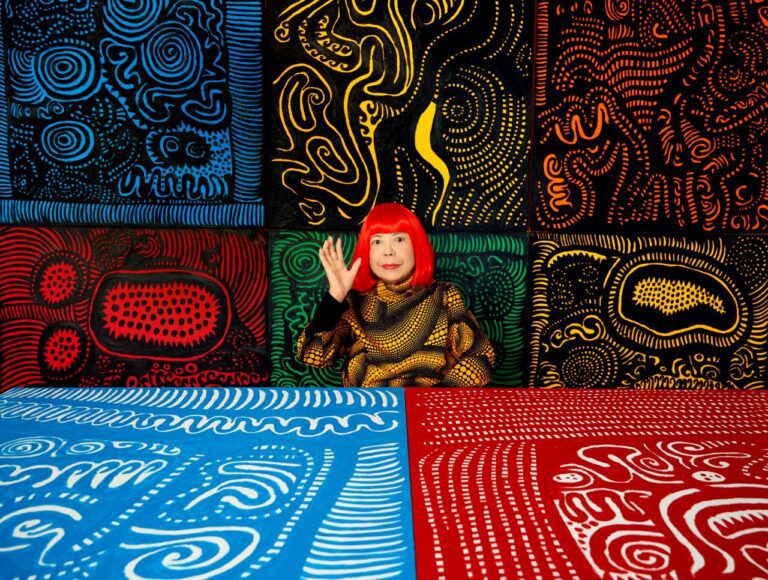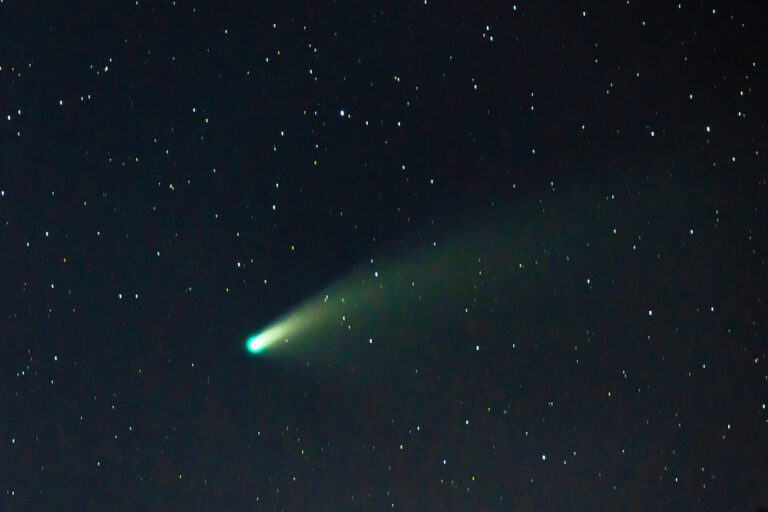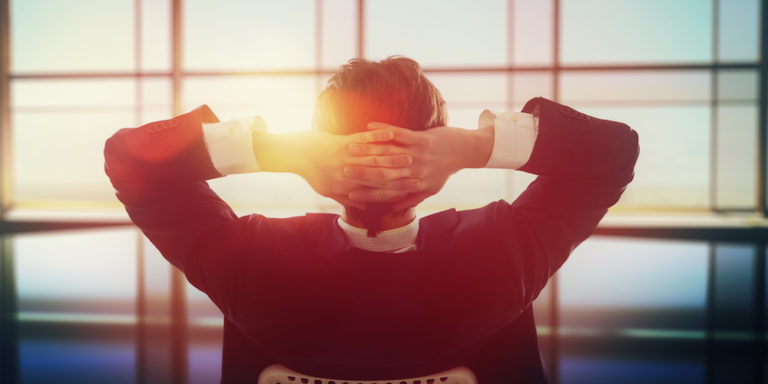Titled Cherophobia, the installation has previously been performed at St Leonard Church in London. Commissioned by Unlimited, a festival celebrating extraordinary new works by disabled and deaf artists, Cherophobia is a performance and a gathering, a oneoff event that intertwines people in their shared suspense and anticipation. It takes its title from a psychiatric condition, defined as ‘an exaggerated or irrational fear of gaiety or happiness’. Originating from her own experience with disability, Noëmi Lakmaier’s live and site-responsive practice explores notions of the ‘other’, ranging from the physical to the philosophical, the personal to the political. MiNDFOOD talks to the artist ahead of her performance.
How did you come to practise art? Were you always interested in installation art or did this come later to you?
My route into practicing art has really been quite a traditional one. It was what I wanted to do as far back as I can remember and when I was 18 I moved from Austria to the UK to study Fine Art. Originally I was sure that I wanted to draw and paint, but not long into my degree I became fascinated by installation art. I discovered the work of artists such as Ann Hamilton, Mona Hatoum and Mike Nelson and became very interested in the artwork as alternative multi-sensory, all enveloping environments that question and challenge the everyday structures we live in.
What are your main motivations and influences?
My most important motivation for making art by far is the continuous search for a visual language; one which is able to express all that, which cannot be expressed in spoken or written words, and one that has the potential to reach us and touch us on a pre-cognitive, felt level. Ludwig Wittgenstein said, “Whereof one cannot speak, thereof one must be silent”. My work is born out of this silence. In terms of influences, I am largely influenced by literature and philosophy, especially the existential philosophy of phenomenologists such as Kierkegaard, Nietzsche, Heidegger, Wilson etc. I am increasingly coming to understand my work, and maybe art in general as a form of visual phenomenology, which shines a light on things through (visual) discourse and thus makes the implicit explicit. I also work as an existential psychotherapist and my work with others in this context also influences my thinking and therefore my art practice.
As far as other artists are concerned I am like viewing and connecting with the works of people who also explore issues of the body, endurance, and duration; people such as Martin O’Brien, Anna Berndtson, Franko B, Katherine Araniello, to name just a few.
A key focus of your work is looking at notions of “The Other” – who is the ‘Other’ that you are hoping to give a voice to in Cherophobia and how can we readdress the way we associate ‘mainstream’ art?
You seem to be asking about “the Other” in my work with the notion that “the Other” is other to the ‘mainstream’ or the ‘normative’. To an extent, this, of course, is a relevant notion in my practice and in my life. I certainly do feel a sense of affinity with a number of “othered” groups: The United Kingdom is my country of choice, not of birth, I am therefore a migrant and I identify as a member of the LGBTQ community and as a disabled person. Although it could be argued that I am being historically and societally placed in these groups, which I now identify with by “the Other”, in that case meaning those who are other to me, the “normative mainstream” for their convenience and comfort… A lot could be said about this especially in the context of the current global political climate, but this discussion might take us too far for now.
Also, I have no “non-normative” body; by choosing to use this body in my work and make it visible I inevitably bring the “Otherness” you are referring to into it. Whether I intend to make a statement about this marginal “Otherness” or not, it is always there to be read into. I am very aware of this and I play with it.
However, and maybe more importantly, phenomenologically “the Other” ‘simply’ identifies the other (human) being in their differences from the self. Recognising “the Other” enables us to recognise the self and develop and maintain an identity. This is particularly significant in early childhood development, when the baby first begins to realise that he or she is separate from their mother/father etc., but remains important throughout life. Failing to recognise “the Other” as distinct from oneself is psychosis.
I struggle to explain exactly what Cherophobia gives a voice too. As I explained above I understand my performance work as an attempt at a visual language that starts where conventional spoken or written language ends.
I think Cherophobia aims to give voice to and heighten awareness of experiences each subtlety, or drastically different from the next, but together in a shared context.
Further to the above, how can art help change the way we view what I guess we would call ‘mainstream’ bodies and ‘other‘ bodies?
More non-normative – by which I mean non-white-able-bodied-heterosexual-cis-male bodies – need to be visible in whatever it is that we call “the mainstream”. That is for sure! I think art and artists are uniquely well placed to shine a light on issues and phenomena in the world but should be expected to change historically and politically deeply ingrained attitudes. A lot could be said about this and about the tokenistic shifting of social responsibility from governments to the arts and the third sector in general, but suffice to say, I am deeply suspicious of artists and organisations who claim that art can “change the world”.
Cherophobia means a fear of happiness – what is the significance in choosing the title for this piece?
I like titles that are not immediately obvious. I like the fact that viewers may have to research what it means and think about what it means to them in the context of the performance.
For me, Cherophobia is a performance of contrasts and opposites, lightness and weight, restraint and freedom, childlike wonder and meticulous scientific planning. My personal experience with mental health issues and my psychotherapy training have made me very aware of and fascinated by the contrasting moods that form part of the human experience. I am particularly interested in the concept of happiness and the question around its attainability.
The writer Mary Paterson pointed out to me that while the powerful superstition that bad things happen to happy people is commonly associated with non-Western societies there is a corresponding fear in the capitalist West – the you are worth it aspirations that forever leaves us with incomplete satisfaction. “Capitalism” Paterson says reflecting on my performance, “ is a golden carrot, strung on a line of impossible dreams. Capitalism markets happiness as pure potential.
What are some of the logistical considerations that go into creating this work (were you frightened at all?)
Cherophobia was in the planning for over 10 years, not least because it was an enormous logistical challenge. It started as an idea, an image in my head, and I just knew I had to make it a reality. At the time I had no idea how challenging this would be. About 5 years into trying and failing to make this piece happen, I met Michael Wüst and that’s when the planning started in earnest. Without Michael’s amazing and unique expertise in both engineering and rope bandage as well as his vision and ingenuity, this performance would most likely never have become manifest. He developed the structure, technique, and process that makes Cherophobia possible. While we worked together closely, I have to admit that I don’t fully understand all the logistics. I am a bit of a control freak, and I, therefore, putting all my trust into Michael and the team has been a challenge and rather anxiety provoking for me for me. That said this discomfort has been a theme in my work for a long time. I deliberately put myself in positions where in a sense I am out of control, but really I am completely in control, as I am the one who has created the work and am deciding what happens. I think this creates an interesting tension in the work.
There never was a rehearsal or a trial of the piece. Personally, I don’t believe in rehearsing live art. It isn’t theatre, but rather an alternative reality, always an experiment, unpredictable and unknown. I don’t think I was frightened, but I was certainly very anxious and apprehensive as well as excited. That’s how I feel before all of my performances. They are a plunge into uncertainty.
You use your body as part this work, as you have for many previous works. What is your motivation in doing this, and what do you hope the viewer takes away from this experience?
Well, initially my motivation for using my body in my work was actually quite mundane and practical. After finishing my masters I moved to London and had very little money. I wanted to continue making my work but soon realized that I neither had the space nor the financial means to make the kind of large-scale installation work I had been making at university. I made some smaller sculptural work for a while, but really wasn’t happy with it. I felt that something was missing. That was when I started using my body and something shifted. My work suddenly made sense to me again and felt meaningful.
Martin Heidegger (among others) distinguishes between two different concepts of body: On the one hand, he talks about Körper, the-body-I-have or body simply as material object and on the other hand Leib, the-body-I-am or the personal body. Usually, we only become aware of the-body-I have if it makes itself known to us for instance through an injury, a need or a discomfort. In my performance work, I strive to become object, material object amongst other material objects. This is of course ultimately a futile task, as so long as we live one of these concepts cannot exist without the other. As I become more of an object, I, in fact, become more human, that is to say, more connected to the world, not withdrawing into my body, but expanding outwards towards the bodies of others.
I feel uncomfortable answering the question of what I hope viewers to take away from the experience. I do not want to prescribe or even guide what people ought to see, think or feel. That is ultimately every single viewer’s individual responsibility. I guess I can say that I hope viewers to take away an experience, maybe even one that briefly takes than out of their everyday lives and opens up a space for new possibility, but maybe that is too much to hope for.







